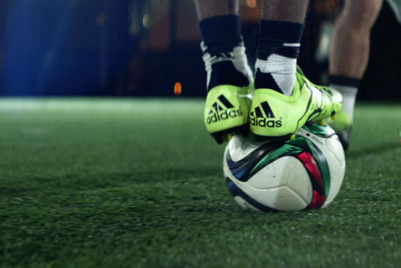
Brands are seeking more and more experiential ways to engage their audiences, demonstrate their purpose or, ultimately, pick up a Lion or two at Cannes. Using the latest AI tech, immersive interactions, playable games and pop-up stores that last a day or two can be effective.
However, we as an industry need to ensure the experiences are genuinely relevant to the brand. Arguably, a few brands get this right: Supreme's focus on communities and partnerships leads the brand experience space but we then saw Kanye West's Yeezy collaboration with 2XU's pop-up store shut down within 45 minutes due a lack of customers.
A study by Kantar found that social media stunts are often seen as superficial and lacking in substance, with only 15% of respondents saying that they had a positive impact on their perception of a brand. I don't think they are alone. Isn't it time to close down the pop-ups and one-off stunts and focus on the experience planning to create effective focus in the experiences for our brands?
It's our role to help our brands start with a genuine experience gap to connect a consumer with the brand, tackle a service design problem and use product design methodologies to create a useful and lasting experience. This should always be established from the outset as opposed to desperately looking for that PR-able creativity, where we see the case study even before the creatives are briefed.
A great example of what worked was during the early days of apps. I was fortunate to work on Aviva Drive (ad pictured above) which didn't just help people to reduce their insurance premium by driving better but also acted as the referee between relationships of who could drive better, it lasted way beyond the campaign.
Examples such as Currys and its initiative to support customer services with the ShopLive experience or Mars Petcare extending its own interaction with pet parents using not humans but the feline kind, with "Ask the cats", point the way. Both are based on key experience gaps derived from the need for the brands to provide more support during and post the pandemic.
However, I believe so many of the so-called experiences or brand activations lack experience design, service design or CX. The product design industry is laughing behind our backs at our splash-in-the pan gimmicky work.
Agencies and clients should be using language like "experience gaps" to use data to drill down and find out exactly what the brand is at its greatest risk from, find out what it stands for, to then identify how to create the very best experience by its intended audience.
One sector that is often reviewed for its experience is that of supermarkets. We are often wooed by the creativity of their latest advertising, only for it to sink to the bottom of the trolley when you struggle to get to a parking spot, find that the olives have moved to above the frozen food and the queue at the till stretches back to the empty shelves of tomatoes.
Additionally, how about waking up on Monday to find rail fares have gone up, snow has fallen overnight and drivers are on strike? It's not quite the "let's get back on track" that was promised to me on the ads the night before.
You could argue that it's the role of the product not the brand team, but I disagree. There are many reasons why a product experience won't be perfect, putting the brand always at risk. When we say brand experience, we should mean just that; it's about how we experience the brand, regardless of how we choose to interact with it.
From my experience of being both within the product design and marketing teams, I guarantee they will both benefit from each other, but we as an industry need to grow up and use service and product design disciplines to identify, create, test and learn in ever-more creative ways to close these experience gaps.
Good examples of where it has worked recently include products for Ramadan, with Asda specific aisles, or the beer glasses for alcohol-free Jupiler beer, made from windscreens damaged in alcohol-related accidents, all seeing product and service design meeting the brand world we all know so well.
So, where do we start? Here are three things that we should all be doing now:
1. Identify measurable experience gaps that support the insight and help us to identify where our brands are at their greatest risk.
2. Use design thinking methodologies such as the Double Diamond innovation process to develop ideas collaboratively and refine through working with the end audience.
3. Always think long term: through a product release cycle, marketing teams change, agencies come and go, but a well-defined product should outlive these ups and downs, continuously creating incremental yearly value for a brand.
I look forward to agencies, marketing and product teams all embracing and working with each other to create lasting products, informative services and useful utilities that make a genuine difference to the brand experience.
Mark Bell is head of experience planning at Abbott Mead Vickers BBDO



.jpg&h=334&w=500&q=100&v=20250320&c=1)


.png&h=334&w=500&q=100&v=20250320&c=1)




.png&h=334&w=500&q=100&v=20250320&c=1)








.png&h=268&w=401&q=100&v=20250320&c=1)